Just like adding different spices and seasonings can create unique flavor profiles for a meal, using a specialty coating on your marketing piece can help communicate your distinct style or add a tactile reinforcement of your messaging.
But using spices and seasoning can be intimidating for an amateur cook who doesn't know the difference between cumin and nutmeg and how much of each to move a dish from good to great. In the same way, designers and marketers need to know how to use a coating to achieve a desired visual affect.
Consider the following advice as your "cookbook" for coatings:
Why Should I use a Coating on My Print Piece?
There are a number of reasons to add a coating to your print project. First of all, coatings can be used to protect the printed piece.
We've all seen those pieces of mail that look like they took a real beating on the way to our house. The truth is that the USPS is not very kind to our mail. It runs through machines that scuff, scratch, rub, rip and mark up beautiful design work. Adding a coating can help keep your marketing piece looking pristine and the way it was intended.
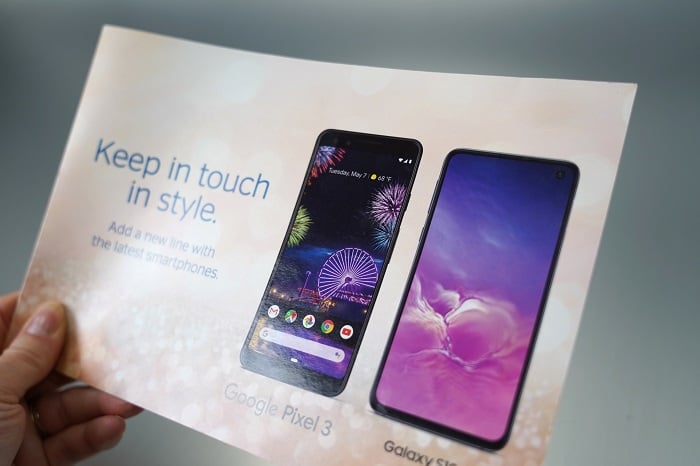
The same goes for pieces that have to go "on the road" with salespeople and may encounter a lot of handling over time. A coating will help these pieces last longer and protect them from dirt and fingerprints.
An alternate reason to use coatings on a marketing piece is as a design element that can help attract the eye. If you want to call attention to a specific image within your piece, you can put a sort of "spotlight" on it through a gloss coating. Or a dull coating can reduce glare and make your marketing text easier to read.
For example, in the image below the booklet on the left was printed digitally with no coating while the booklet on the right had a dull coating on the background and a gloss coating on the handwritten words. Coatings can also completely change the feel of a piece when you hold it in your hands.
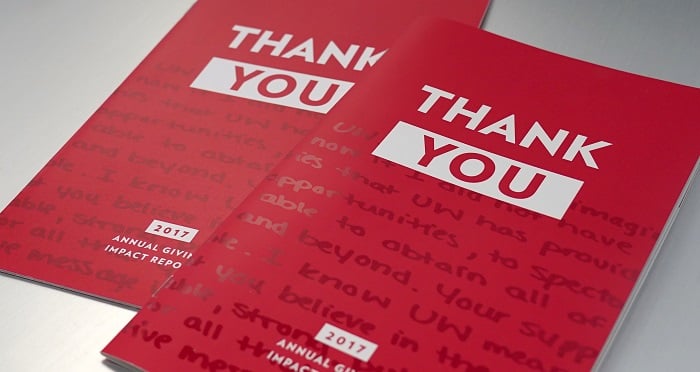
What are my options for Print Coatings?
Here is a list of the three different kinds of coatings and ideas for how they can be used:
1. Varnishs are basically clear ink. They come in gloss (shiny), satin, or matte (dull) finishes. They are applied to your print piece just like each ink is applied, by using a plate. So you can create a varnish in any pattern you like. For example, Standard Process used their logo in varnish as a repeating pattern in the white areas of their pocket folder.

The downside to varnish is that it has a tendency to yellow over time so marketing pieces cannot be stored for long periods.
2. Aqueous coatings are available in gloss, satin, matte and soft touch. Aqueous coating is a great way to protect a piece that is handled a lot. It does not yellow over time, and because it is water-based, it’s more environmentally-friendly than other coatings.
Soft touch is a special aqueous coating that gives paper protection, but also a smooth velvety texture. If you have ever felt a piece of paper that felt luxurious to the touch, it probably had a soft touch coating applied. It is used by most luxury brands like Audi, Apple, Tiffany and others to give their materials a "premium" feel. We used a soft touch coating for a POP mailer on the sense of touch.
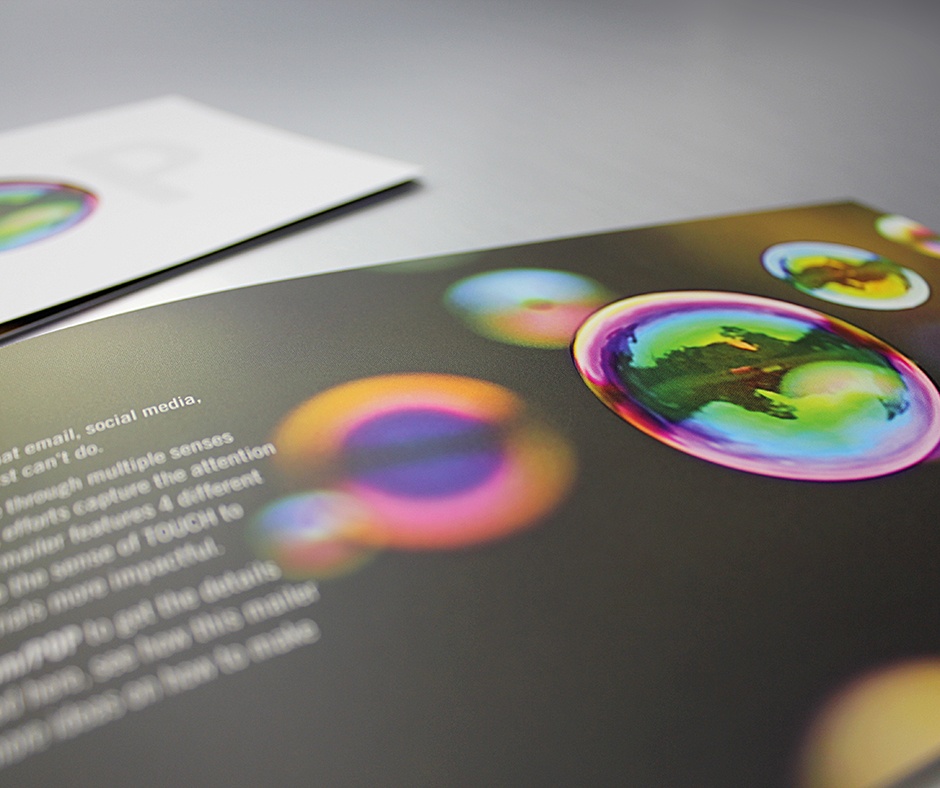
- Raised — Think droplets of water on a leaf. This can be a cheaper alternative to embossing.
- Pearlescent or Glitter — Make it shiny! The Pop mailer above had pearlescent coating on the bubbles. Pearlescent has a glow, glitter has a sparkle because it contains tiny metallized particles.
- Sandpaper or Grit — Give your piece a rough feel, perfect for outdoor imagery or military brands.
- Scratch-off — Just like the lottery tickets you can buy at the convenience store, you can use this coating to hide a code or a prize.
- Rub and Smell — Add almost any scent imaginable to your marketing piece and let your audience scratch and sniff! See how we did it with a bubble gum scent.
- Glow in the Dark — Activated by light and then glows when the lights turn off.
- Thermochromic — Temperature-activated coatings allow your recipients to rub and reveal a hidden message underneath.
- Holographic — Add unique rainbow holographic patterns for added security or just for fun.
If you are planning to mail your piece by inkjetting an address on top, you should avoid UV coatings where the address is going to go because the inkjet ink will not dry over it. Spot UV coatings are also the most expensive of the coating options, and can make a project's turnaround time longer as it has to be outsourced to a specialty print finisher.
Can I Mix and Match Coatings on a Single Print Piece?
The answer is yes and it can make an even bigger impact! This campaign below for the Diocese of Madison wanted to mimic the look of stained glass. We used a strike-through reticulating varnish on the black lines combined with a flood of UV gloss coating overall. These two coatings don't mix so the end result is that the "glass" pieces appear shiny while the black lines were dull and textured to the touch.
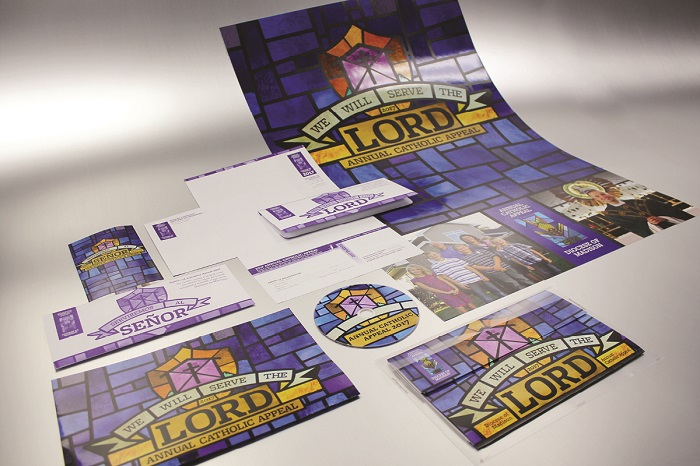
How do I design for coatings on a print piece in Adobe?
Coatings are generally applied as either a flood (entire piece of paper) or as a spot. For flood coats you need only communicate this to your printer—no special file is needed. For spot coatings, you'll need to create some custom spot colors in your Adobe swatches (100% Cyan or 100% Magenta for example) and label them as the coatings you want - e.g. "Dull Varnish" or "Gloss Aqueous". Then you need to create a "Coatings" layer in your design file where you put the coatings design using these new custom spot colors. Download our File Setup for Coatings instructions PDF for the full details.
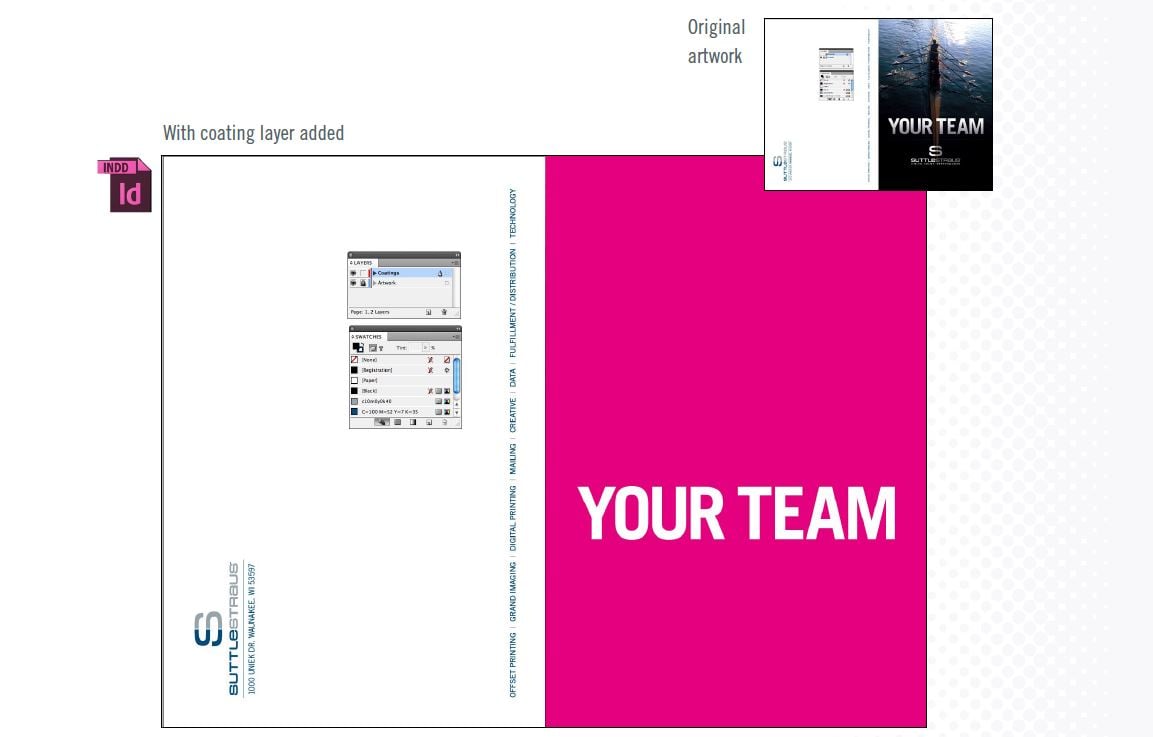
Are there any cases when I should not use a coating?
Yes, sometimes it's better for paper to go naked. If you want your recipient to be able to write on your final printed piece, for example a branded notepad or notecards, coatings are not receptive to pencil or pen ink, so leave it off. Similarly, if you are going to mail your marketing piece, it's always best practice to leave the address block free of coatings so the ink from addressing will dry and not rub off.
Still confused about coatings? Ask a member of our team to help, we can walk you through the options with real samples you can see and feel firsthand!


